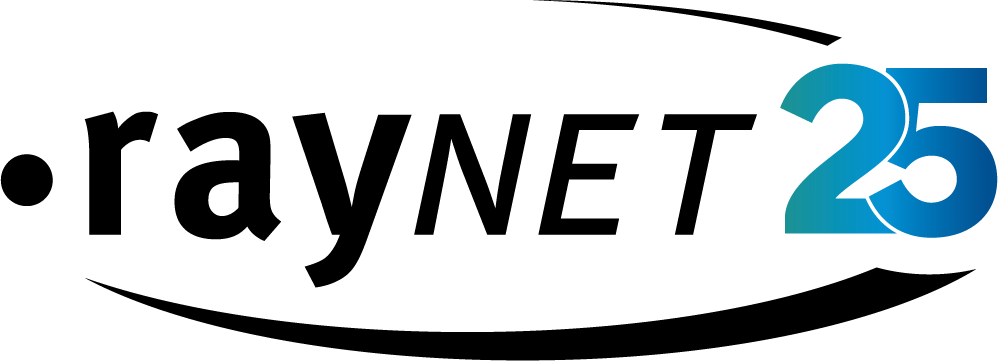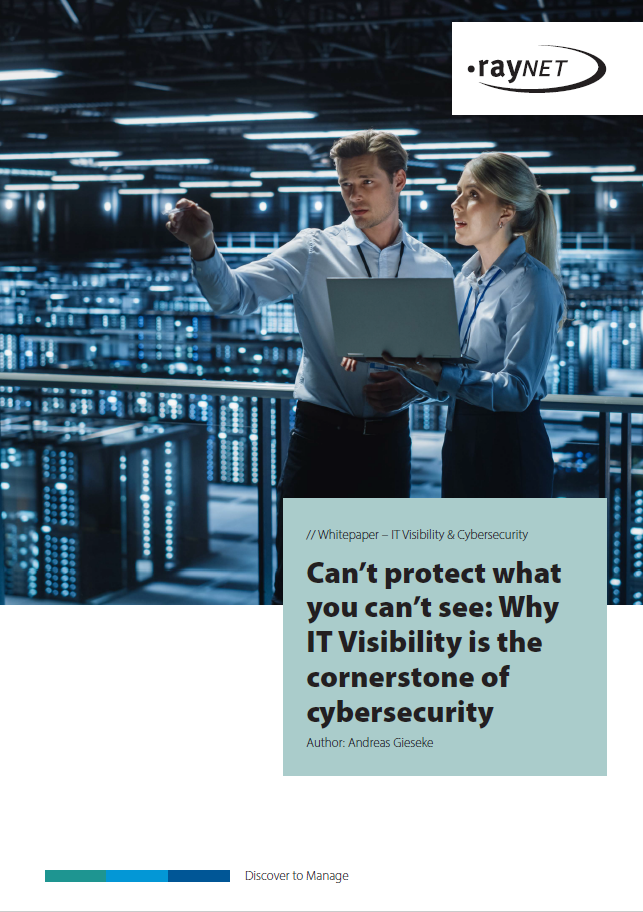From complexity to clarity: How IT Visibility can give you the big picture to drive all your IT initiatives
Date: July 20th, 2023
IT Visibility is essential for many companies and organizations and is becoming an increasingly important challenge for many IT stakeholders. That’s how our guest blogger Marc Roggli, Head of SAM & ITAM Services at Bechtle Schweiz AG, sees it too.
Customer requests for IT Visibility have skyrocketed in recent years. As IT landscapes grow more decentralized and move off-premises, IT leaders find it harder to keep costs down, ensure infrastructure security, and make strategic portfolio management decisions. While the developments point to positive trends, including flexibilities in purchasing and on-boarding software as well as remote work, IT leaders must balance those flexibilities with budgets, customer demands, changing markets and plans for strategic growth.
IT Visibility is one of the most important foundations for a resilient IT future
The greatest challenge currently facing companies and their managers is getting a clear overall picture of their IT landscape. This is difficult because there are countless data gaps that need to be identified and remediated. But doing so creates allows businesses to develop a clear IT strategy that allows them to make strategic decisions.
The problem, ironically, is simple: complexity. Customers rely increasingly on cloud and hybrid solutions, and they also offer more cloud and hybrid solutions & services. This multiplies the number of devices, services, applications, etc. that need to be maintained and monitored, while also increasing the number of users and interactions between systems and services. This complexity opens significant blind spots and reduces transparency.
A lack of transparency makes it harder for IT leaders to protect their infrastructure and maintain reliable business services. It can lead to more outages, longer downtimes, data breaches, as well as impact reputation and brand.
IT Visibility gaps can mean real trouble for the businesses I work with, which is why we have been getting so many requests for IT visibility solutions.
Data gaps are even bigger than most organizations realize
From experience, I can say that customers want to get a quick and efficient overview of their IT assets. These overviews need to include insights into the devices and software, how they’re configured, and other information such as location, license type, business functions, and so on. The information is crucial for full IT Visibility, as it allows businesses to better manage their complex IT landscapes and make a variety of strategic decisions.
But these projects often fail because the data is incomplete, offering only a partial view of the IT landscape. According to Gartner, 71% of organizations cite data quality concerns, and 40% of business initiatives fail due to poor data quality. Not only can this doom long term strategic initiatives, but it becomes a significant weakness in trying to protect IT assets from vulnerabilities. Vulnerability information can’t be gathered from the devices themselves and needs to be supplemented through a technology catalog that includes accurate and up to date commercial and market data. Many companies lack not only the technology catalog but a tool for aggregating and transforming the data to ensure they get meaningful insights from the information.

At Bechtle Schweiz, my team and I run into this problem all the time when consulting with customers on software and license optimization. Customers can’t provide the necessary data quality and don’t have the tools they need for combining insights from their disparate data sources, leaving them with incomplete data sets. They can’t realize any of the value hidden in their SAM and ITAM data.
We use the Unified Data Platform and its comprehensive technology catalog, to solve this problem. The solution allows us to normalize and enrich customer data to unlock the hidden insights and get the visibility customers need to optimize their software licenses and move onto other important initiatives such as vulnerability management and portfolio optimization.
Breaking down siloes makes it even easier to overcome technical problems. By ensuring uncomplicated data flows and stakeholder onboarding, you can speed up the adoption of standardized tools and methodologies to get consistent and comprehensive IT visibility.
Can't protect what you can't see: Why IT Visibility is the cornerstone of cybersecurity
In this whitepaper, we’ll show you how blind spots can weaken and even threaten your infrastructure. But we’ll also show you how IT Visibility can:
- Improve your security strategy
- Reveal hidden gaps and blind spots in your existing security measures
- Maintain business flexibilities
- Ensure your competitive edge
Without a strategy, visibility is doomed to fail
Visibility is meaningless without a strategy. You can take in all the information, see everything, and in the end not know what to do with all those insights unless you have clear goals and priorities. Only then can you focus on the most relevant problems and data types and find a technical solution that will give you the insights you need. Once this “big picture” is in place, you can transform the complexity from information to vision, and enable enterprise-wide initiatives.
Any modern IT strategy must strike the right balance between innovation and infrastructure security. It’s a delicate balancing act, but my approach has always been to keep the “real” security requirements in mind. You don’t want to overstate the risk, especially when the rewards can be so significant. A lot of these projects focus on “software vulnerability” anyway, such as gathering End-of-Life and End-of-Support data to determine security gaps, so the risks of introducing a new technology are outweighed by increased vulnerability and risk management. Vulnerability management often requires software portfolio optimization, which brings monetary benefits that are appealing to the whole company, but especially the CFO.
IT Visibility is most successful when the relevant IT teams and IT management stakeholders, including SAM and ITAM, have a unified strategy and vision, and when the value is communicated in a way that makes sense to each of them. Only when enterprise teams understand how IT visibility makes their jobs easier and adds more value to the work, they do will they recognize and appreciate the added value of a “single source of truth”. It’s a cultural change, but one worth making. After all, a single source of truth in the ITAM ecosystem enables better control over complex IT assets. Visibility will increase and improve the success and efficiency of almost all day-to-day IT management work, a win-win for any team.
Quick insights for immediate action
A lot of people fail to understand that IT Visibility doesn’t take years to pay off. Sustainable transparency can provide immediate dividends. My customers are often amazed by the inventory results. They are forced to realize that their actual software portfolios are significantly larger than what they thought they were, information that CFOs and IT leaders can use to make immediate adjustments for cost savings. The UDP shows businesses where there are too many applications with similar business functions, too many versions of a single product, or where a product is end-of-support and thus poses a security risk. These are immediate wins that don’t require months or even years of additional analysis. They are insights that can be translated into immediate action.
Customers often contact us because they want to reduce their software spend, but the organizations often don’t know where to start optimizing. Are there software vendors that should be looked at more closely? Is the software in use up to date? What are the priorities?
With IT Visibility, you can answer these questions with the click of a button.
Once the software portfolio has been optimized, you can use the insights from IT Visibility to continuously optimize your portfolio and quickly identify and expand into new areas for optimization. With the new insights, improved data quality, and new processes allow you to add new systems, devices, and data types quickly, and customized reporting allows important insights into risk areas and optimization potential at any time.
Companies can only see the true scope of the problem when they have the insights that Raynet can give them. Most organizations just don’t have the transparency to understand how incomplete their IT data actually is until they get these initial results.
Many companies I have met simply trust the data quality because they put so much time and money into getting that data. a lot of time and money has been invested. But with the UDP they can see the gaps, and every customer I have worked with has attested to how the UDP has significantly improved their data quality.
With complete IT visibility, you lay the foundation for countless initiatives that make an IT infrastructure more efficient, more cost-optimized, and most importantly, more secure. In the end, it’s clear that comprehensive asset visibility is the foundation for everything! Holding on to the wrong transparency will not bring real success. Making wrong decisions on wrong bases is bad and the company loses money. IT visibility is one of the most important foundations for a resilient IT future!
From complexity to clarity: How IT Visibility can give you the big picture to drive all your IT initiatives
Reading time: 4 minutes
July 20th, 2023 | Marc Roggli
IT Visibility is essential for many companies and organizations and is becoming an increasingly important challenge for many IT stakeholders. That’s how our guest blogger Marc Roggli, Head of SAM & ITAM Services at Bechtle Schweiz AG, sees it too.
Customer requests for IT Visibility have skyrocketed in recent years. As IT landscapes grow more decentralized and move off-premises, IT leaders find it harder to keep costs down, ensure infrastructure security, and make strategic portfolio management decisions. While the developments point to positive trends, including flexibilities in purchasing and on-boarding software as well as remote work, IT leaders must balance those flexibilities with budgets, customer demands, changing markets and plans for strategic growth.
IT Visibility is one of the most important foundations for a resilient IT future
The greatest challenge currently facing companies and their managers is getting a clear overall picture of their IT landscape. This is difficult because there are countless data gaps that need to be identified and remediated. But doing so creates allows businesses to develop a clear IT strategy that allows them to make strategic decisions.
The problem, ironically, is simple: complexity. Customers rely increasingly on cloud and hybrid solutions, and they also offer more cloud and hybrid solutions & services. This multiplies the number of devices, services, applications, etc. that need to be maintained and monitored, while also increasing the number of users and interactions between systems and services. This complexity opens significant blind spots and reduces transparency.
A lack of transparency makes it harder for IT leaders to protect their infrastructure and maintain reliable business services. It can lead to more outages, longer downtimes, data breaches, as well as impact reputation and brand.
IT Visibility gaps can mean real trouble for the businesses I work with, which is why we have been getting so many requests for IT visibility solutions.
Data gaps are even bigger than most organizations realize
From experience, I can say that customers want to get a quick and efficient overview of their IT assets. These overviews need to include insights into the devices and software, how they’re configured, and other information such as location, license type, business functions, and so on. The information is crucial for full IT Visibility, as it allows businesses to better manage their complex IT landscapes and make a variety of strategic decisions.
But these projects often fail because the data is incomplete, offering only a partial view of the IT landscape. According to Gartner, 71% of organizations cite data quality concerns, and 40% of business initiatives fail due to poor data quality. Not only can this doom long term strategic initiatives, but it becomes a significant weakness in trying to protect IT assets from vulnerabilities. Vulnerability information can’t be gathered from the devices themselves and needs to be supplemented through a technology catalog that includes accurate and up to date commercial and market data. Many companies lack not only the technology catalog but a tool for aggregating and transforming the data to ensure they get meaningful insights from the information.
At Bechtle Schweiz, my team and I run into this problem all the time when consulting with customers on software and license optimization. Customers can’t provide the necessary data quality and don’t have the tools they need for combining insights from their disparate data sources, leaving them with incomplete data sets. They can’t realize any of the value hidden in their SAM and ITAM data.
We use the Unified Data Platform and its comprehensive technology catalog, to solve this problem. The solution allows us to normalize and enrich customer data to unlock the hidden insights and get the visibility customers need to optimize their software licenses and move onto other important initiatives such as vulnerability management and portfolio optimization.
Breaking down siloes makes it even easier to overcome technical problems. By ensuring uncomplicated data flows and stakeholder onboarding, you can speed up the adoption of standardized tools and methodologies to get consistent and comprehensive IT visibility.

Without a strategy, visibility is doomed to fail
Visibility is meaningless without a strategy. You can take in all the information, see everything, and in the end not know what to do with all those insights unless you have clear goals and priorities. Only then can you focus on the most relevant problems and data types and find a technical solution that will give you the insights you need. Once this “big picture” is in place, you can transform the complexity from information to vision, and enable enterprise-wide initiatives.
Any modern IT strategy must strike the right balance between innovation and infrastructure security. It’s a delicate balancing act, but my approach has always been to keep the “real” security requirements in mind. You don’t want to overstate the risk, especially when the rewards can be so significant. A lot of these projects focus on “software vulnerability” anyway, such as gathering End-of-Life and End-of-Support data to determine security gaps, so the risks of introducing a new technology are outweighed by increased vulnerability and risk management. Vulnerability management often requires software portfolio optimization, which brings monetary benefits that are appealing to the whole company, but especially the CFO.
IT Visibility is most successful when the relevant IT teams and IT management stakeholders, including SAM and ITAM, have a unified strategy and vision, and when the value is communicated in a way that makes sense to each of them. Only when enterprise teams understand how IT visibility makes their jobs easier and adds more value to the work, they do will they recognize and appreciate the added value of a “single source of truth”. It’s a cultural change, but one worth making. After all, a single source of truth in the ITAM ecosystem enables better control over complex IT assets. Visibility will increase and improve the success and efficiency of almost all day-to-day IT management work, a win-win for any team.
Can't protect what you can't see: Why IT Visibility is the cornerstone of cybersecurity
In this whitepaper, we’ll show you how blind spots can weaken and even threaten your infrastructure. But we’ll also show you how IT Visibility can:
- Improve your security strategy
- Reveal hidden gaps and blind spots in your existing security measures
- Maintain business flexibilities
- Ensure your competitive edge
With IT Visibility, you can answer these questions with the click of a button.

Once the software portfolio has been optimized, you can use the insights from IT Visibility to continuously optimize your portfolio and quickly identify and expand into new areas for optimization. With the new insights, improved data quality, and new processes allow you to add new systems, devices, and data types quickly, and customized reporting allows important insights into risk areas and optimization potential at any time.
Companies can only see the true scope of the problem when they have the insights that Raynet can give them. Most organizations just don’t have the transparency to understand how incomplete their IT data actually is until they get these initial results.
Many companies I have met simply trust the data quality because they put so much time and money into getting that data. a lot of time and money has been invested. But with the UDP they can see the gaps, and every customer I have worked with has attested to how the UDP has significantly improved their data quality.
With complete IT visibility, you lay the foundation for countless initiatives that make an IT infrastructure more efficient, more cost-optimized, and most importantly, more secure. In the end, it’s clear that comprehensive asset visibility is the foundation for everything! Holding on to the wrong transparency will not bring real success. Making wrong decisions on wrong bases is bad and the company loses money. IT visibility is one of the most important foundations for a resilient IT future!
Share this blog post:




